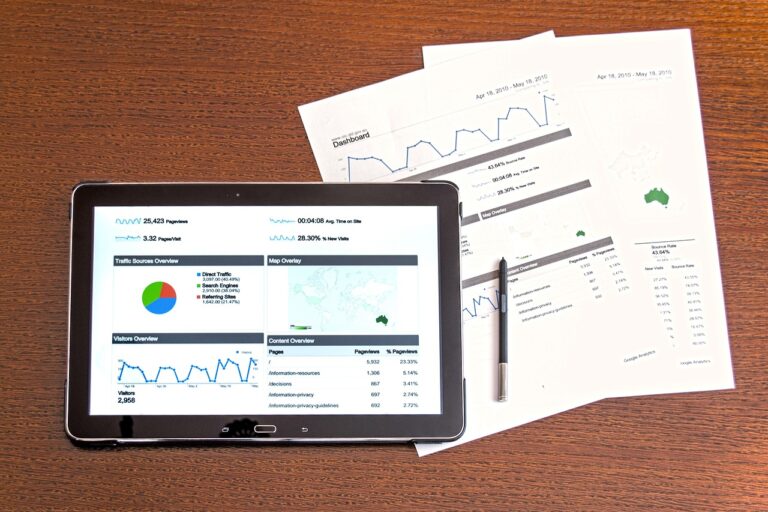Leveraging Data Analytics for Fraud Detection and Prevention
diamondexch999 login, sky exchange sign up, diamondexch999:Leveraging Data Analytics for Fraud Detection and Prevention
In today’s digital age, fraudsters are constantly finding new ways to deceive individuals and organizations. From credit card fraud to identity theft, the consequences of falling victim to fraud can be devastating. That’s why it’s crucial for businesses to stay ahead of the game by leveraging data analytics for fraud detection and prevention.
Data analytics is a powerful tool that can help organizations identify patterns, anomalies, and trends that may indicate fraudulent activity. By analyzing large amounts of data from various sources, businesses can uncover potential fraud schemes and take proactive measures to protect themselves and their customers.
But how exactly can data analytics be used for fraud detection and prevention? Let’s dive into some of the key strategies and techniques that organizations can use to safeguard against fraud.
1. Data Collection and Aggregation
The first step in leveraging data analytics for fraud detection is collecting and aggregating data from multiple sources. This may include transactional data, customer information, and external data sources such as public records and social media. By bringing all of this data together in one place, organizations can create a comprehensive view of their operations and identify any red flags that may indicate fraudulent activity.
2. Data Cleaning and Preprocessing
Before data can be analyzed for fraud detection, it’s essential to clean and preprocess the data to ensure its accuracy and consistency. This may involve removing duplicate records, correcting errors, and standardizing data formats. By cleaning and preprocessing the data, organizations can improve the quality of their analytics and make more accurate decisions.
3. Data Mining and Pattern Recognition
Once the data has been collected and cleaned, organizations can use data mining techniques to uncover patterns and anomalies that may indicate fraudulent activity. This may involve using algorithms to detect unusual transaction patterns, identify suspicious behavior, or flag high-risk customers. By leveraging data mining and pattern recognition, organizations can quickly identify potential fraud schemes and take action to prevent losses.
4. Machine Learning and AI
Machine learning and artificial intelligence (AI) are powerful tools that can help organizations automate the process of fraud detection. By using advanced algorithms, organizations can train machine learning models to analyze data, detect anomalies, and predict fraudulent activity. These models can continuously learn and adapt to new threats, making them invaluable tools for fraud prevention.
5. Real-Time Monitoring and Alerts
In the fight against fraud, time is of the essence. That’s why real-time monitoring and alerts are crucial for identifying and responding to fraudulent activity quickly. By setting up alerts and monitoring systems, organizations can receive notifications in real-time when suspicious activity is detected, allowing them to take immediate action to prevent losses.
6. Social Network Analysis
Another powerful technique for fraud detection is social network analysis, which involves examining the relationships between individuals and entities to uncover potential fraud schemes. By analyzing social networks, organizations can identify connections between fraudsters, detect collusion, and prevent fraudulent activities before they escalate.
By leveraging data analytics for fraud detection and prevention, organizations can stay one step ahead of fraudsters and protect themselves and their customers from financial losses and reputational damage. With the right tools and techniques in place, businesses can proactively identify and mitigate fraud risks, ensuring a secure and trustworthy environment for all stakeholders.
FAQs
Q: How can data analytics help prevent credit card fraud?
A: Data analytics can help prevent credit card fraud by analyzing transaction data to detect patterns and anomalies that may indicate fraudulent activity. By monitoring transactions in real-time and setting up alerts for suspicious behavior, organizations can quickly identify and respond to potential threats.
Q: What are some common challenges organizations face when implementing data analytics for fraud detection?
A: Some common challenges organizations face when implementing data analytics for fraud detection include data quality issues, lack of expertise in data analytics, and the need for continuous monitoring and updates to keep up with evolving fraud schemes.
Q: Can data analytics be used for fraud detection in industries other than banking and finance?
A: Yes, data analytics can be used for fraud detection in a wide range of industries, including healthcare, insurance, retail, and telecommunications. Any organization that processes large amounts of data and transactions can benefit from leveraging data analytics for fraud detection and prevention.







